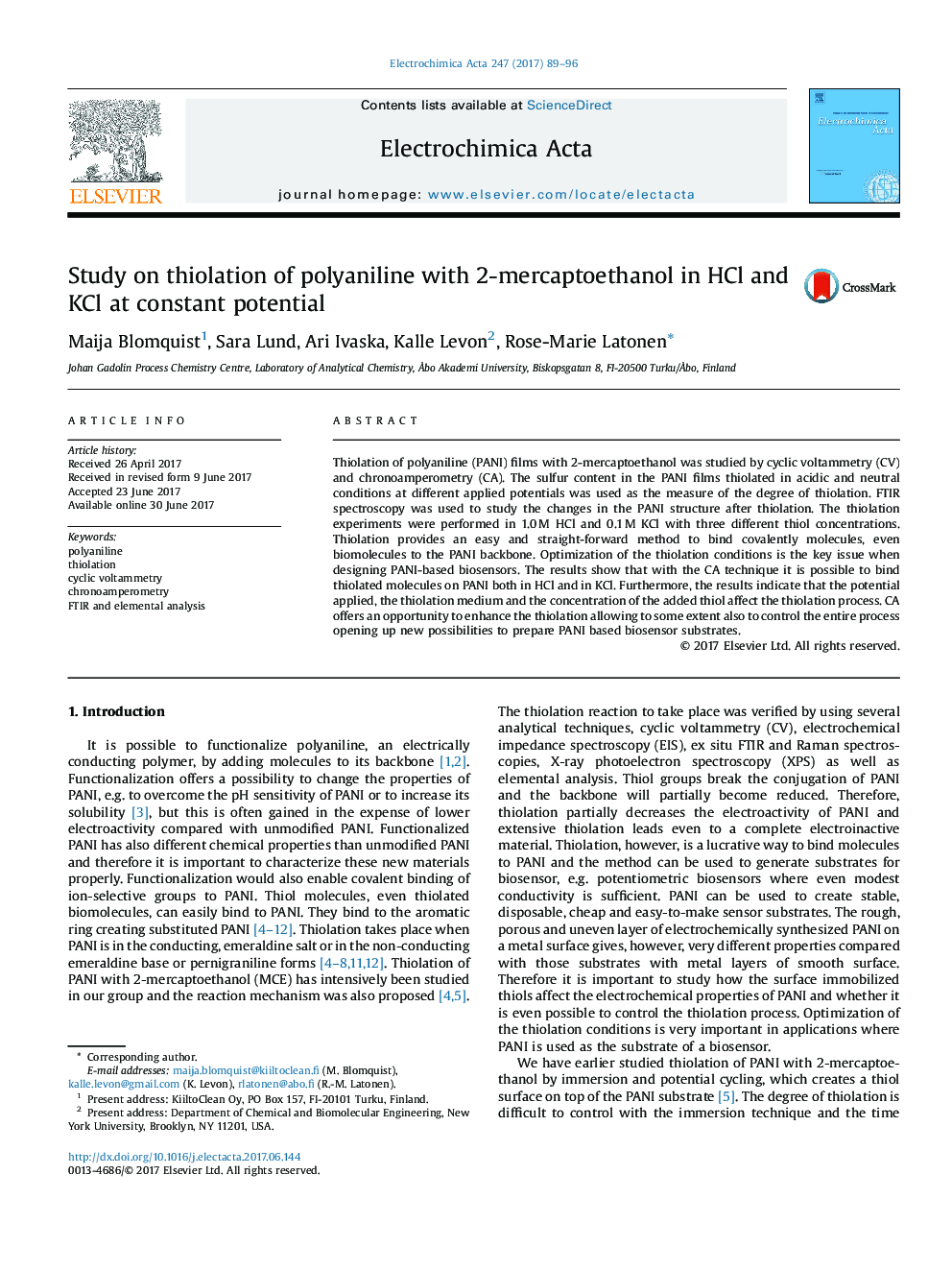| Article ID | Journal | Published Year | Pages | File Type |
|---|---|---|---|---|
| 6470919 | Electrochimica Acta | 2017 | 8 Pages |
Thiolation of polyaniline (PANI) films with 2-mercaptoethanol was studied by cyclic voltammetry (CV) and chronoamperometry (CA). The sulfur content in the PANI films thiolated in acidic and neutral conditions at different applied potentials was used as the measure of the degree of thiolation. FTIR spectroscopy was used to study the changes in the PANI structure after thiolation. The thiolation experiments were performed in 1.0Â M HCl and 0.1Â M KCl with three different thiol concentrations. Thiolation provides an easy and straight-forward method to bind covalently molecules, even biomolecules to the PANI backbone. Optimization of the thiolation conditions is the key issue when designing PANI-based biosensors. The results show that with the CA technique it is possible to bind thiolated molecules on PANI both in HCl and in KCl. Furthermore, the results indicate that the potential applied, the thiolation medium and the concentration of the added thiol affect the thiolation process. CA offers an opportunity to enhance the thiolation allowing to some extent also to control the entire process opening up new possibilities to prepare PANI based biosensor substrates.
